Serapeum... The greatest underground mystery
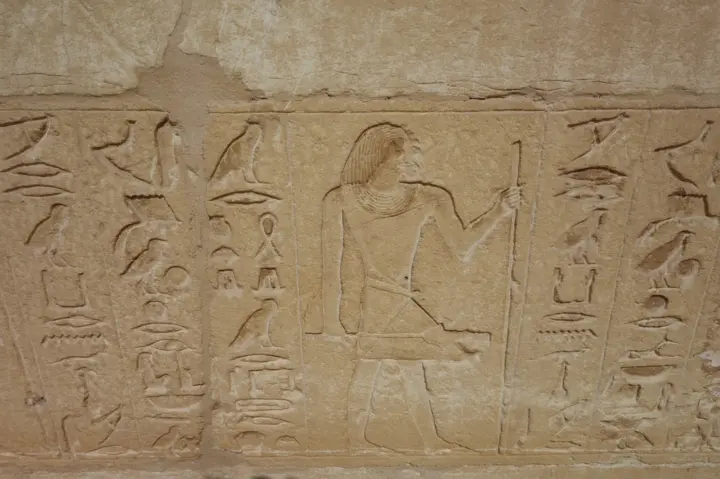
When you come across stone lions lined up next to each other... Know that you have reached the catacombs."
Show key points
- The Serapeum of Saqqara, first mentioned by the ancient geographer Strabo, remained hidden underground for nearly 1800 years until rediscovered by French archaeologist Auguste Mariette in 185
- The Serapeum was believed to be the burial site for sacred bulls known as Apis, worshipped by ancient Egyptians as manifestations of the god Serapis.
- Carved deep underground with no evidence of surrounding construction, the catacombs contain massive stone sarcophagi weighing up to 100 tons, raising questions about how they were transported and placed.
- ADVERTISEMENT
- One of the greatest mysteries is that all sarcophagi were found empty, including the only sealed one, which Mariette opened using dynamite—leaving historians puzzled about their true purpose.
- Some theorists, like Christopher Dunn, cite the precise geometric angles and craftsmanship of the coffins as evidence of lost advanced technology beyond what should have been possible at that time.
- Several controversial and speculative theories exist about the sarcophagi, including their use as energy batteries, teleportation stations, or even healing chambers, suggesting they may not have been used for burial at all.
- Despite extensive research and numerous theories, no definitive explanation has yet been found for the origins, purpose, or construction methods of the Serapeum's massive underground structures.
The Greek geographer "Strabo" in the first century AD
The history of Egypt contains many mysterious secrets and mysteries that have no parallel in the world, including that place in the desert of Saqqara mentioned by the Greek historian and geographer "Strabo". Today we will tell you one of the greatest mysteries of the underground world. The mystery of the catacombs of Serapeum Saqqara.
Curiosity Auguste Mariette
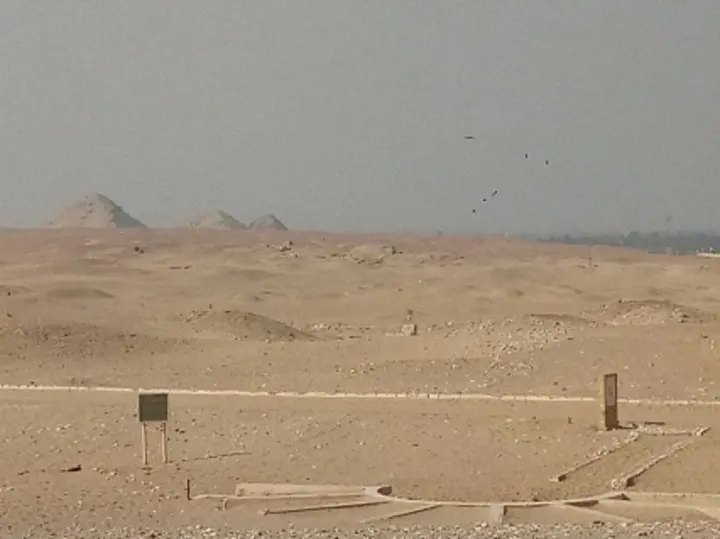
The whispers of "Strabo" remained folding books and his ancient discovery remained buried underground for hundreds of years until the French scientist "Auguste Mariette" came 1800 years after "Strabo" and discovered the manuscripts of "Strabo" that talk about the mystery of the Serapeum and decided to search for that place for a whole year, so he followed the path mentioned by "Strabo" in his manuscript and set off on that drawn road until he reached the stone statues between the temple of Luxor and the courtyard of Amun, and in 1851 AD "Auguste" found an underground entrance, when he entered To that place were found giant stone coffins weighing up to 100 tons each, these coffins were not the only mystery, but they were also in the same place that became famous as ... Serapeum.
Recommend
Why the Serapeum is so named

This name dates back to the ancient Greek language and means "the place of the god Serapis". Serapis was a god whose worship was imposed by the Greeks on the Egyptians in the third century BC by order of the Greek pharaoh "Ptolemy I" in an attempt to merge the Egyptian and Greek civilizations. He is the god of healing among the Egyptians, and was depicted in the shape of the sacred bull "Abis".
Serapeum inlet
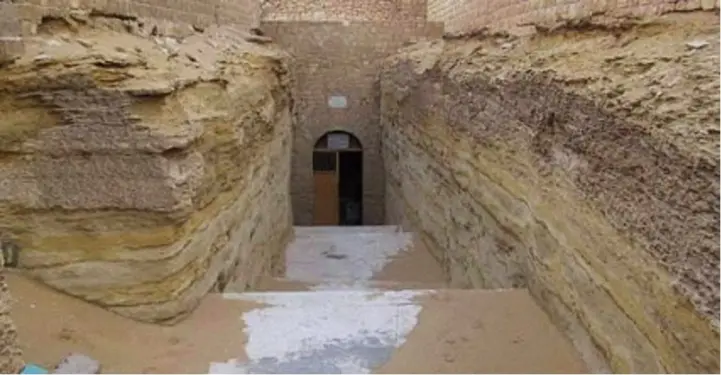
If we look at the entrance to the Serapeum, we will find that the entrance is narrow with a width of only 3 meters and 20 centimeters, which is the same width as the coffins inside, which means that the coffins can only enter from the entrance lengthwise, but how did they transfer them? And why?
Some scientists assumed that these coffins were first placed in this place and then the place was built around it and then backfilled, but this possibility was refuted by studies that confirmed that the place is completely rocky and that there is no evidence of any construction, but the place was completely carved underground and above a natural rock layer 12 meters thick.
What is the purpose of these basements? And why do Egyptians endure so much hardship? Is there another use for that mysterious place?
Serapeum and the worship of the bull "Abis"
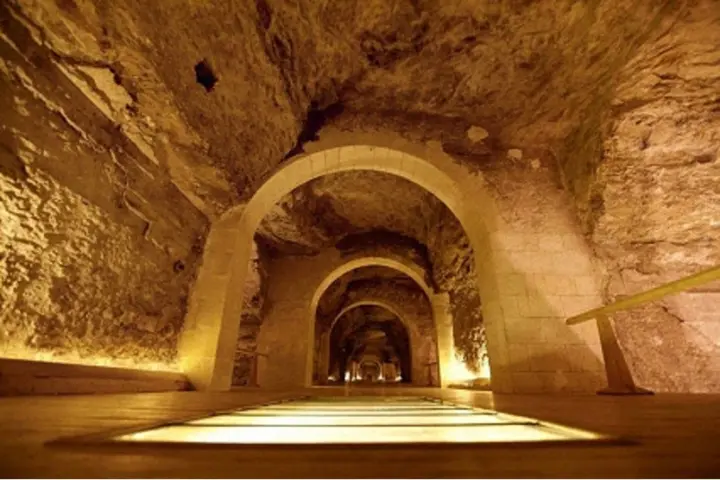
Some ancient manuscripts mention this place called "Serapeum" as a place for burying the mummified bodies of the bulls of Apis, an ancient Egyptian idol in the shape of a bull. So what is the story of Abyss?
5,000 years ago, when a lone bull was born to its mother during lightning, the ancient Egyptians revered, worshipped and cared for it in its life and after its death, called it "Abis", and buried it in the Serapeum next to the ancient city of Memphis. There was a sensation as a result of Auguste Mariette's discovery of the Serapeum and European governments funded extensive research work in and around the place, and for 15 years Auguste wrote a book called "Serapeum Memphis" in French, which has not been translated into any other language until now, which made it even more mysterious and strange.
Serapeum inside
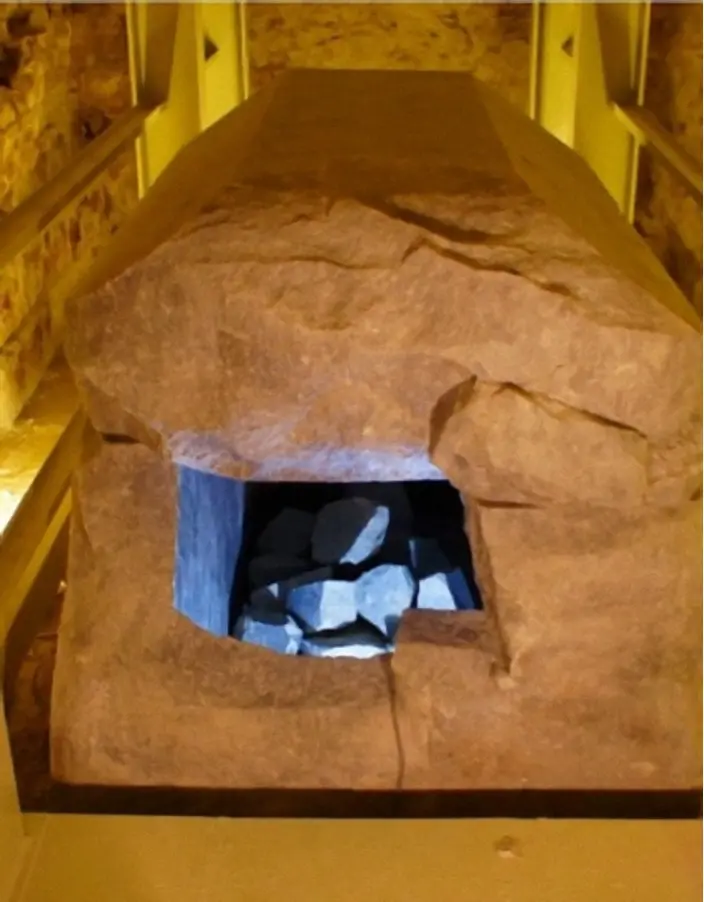
The catacombs are located in "Abbis" under the temple of Abyss and the Serapeum contains a large and a small exhibition, the large gallery contains straight corridors of more than 300 meters and contains 26 stone coffins carved from the harshest types of stones in the world, and cutting and shaping these coffins requires the use of diamond heads and large energy that were not available at that time immemorial. The weight of one coffin reaches 70 tons, and each coffin has a separate cover weighing up to 30 tons, and there is some evidence that King Absmatic I used the great exhibition to bury the bulls of "Abbis" but he did not build the place, as it existed much before him. So there's a good chance that this wasn't why the serpium was built, and that wasn't the real reason behind the mystery beneath Egypt.
The small exhibition was used during the reign of King "Ramses II", and contains seventeen rooms carved in the rock and was full of treasures that were transferred to France and the small gallery has been closed since then and no one has been allowed to visit it until now.When "Auguste" entered the Serapeum, he found that all the coffins were open and empty except for one coffin, so he thought at first that those coffins had been stolen, then "Auguste" brought many equipment and workers to open the closed coffin, but he could not Until moving the lid from its place, he resorted to a solution that we consider one of the stupidest works that any archaeologist can do, he blew up the coffin with dynamite, and the surprise was... It was the last coffin. Also empty. This was the most impressive thing that was discovered, so why were these giant, highly rigid coffins carved so meticulously and geometrically and left empty like this? And why did they close the coffin empty?
Christopher Dunn and the theory of geometric accuracy

While the world talks about the pyramids and the Egyptian civilization above the ground, the world hides the information about the serapeum despite the fact that the mystery of the serapeum is greater than the Egyptian civilization above the ground, and many scientists believed that the ancient Egyptians had a missing advanced technology that we know nothing about, such as "Christopher Dunn" in his book "The Lost Technology in the Egyptian Civilization". Christopher relied in his book on the so-called geometric accuracy in the Egyptian civilization through the calculation of the sides, and in order to prove the existence of that missing technique in the serapeum, he measured the inner angle of the coffins, so he was surprised that the inner angle is right and disciplined with amazing accuracy to the point that it does not allow light to pass through if the coffin is closed, which no human can carve with primitive tools, it is impossible, that technique used in carving serapeum coffins cannot be imagined great, and the strange thing is where That technique is gone?
Power Battery Theory
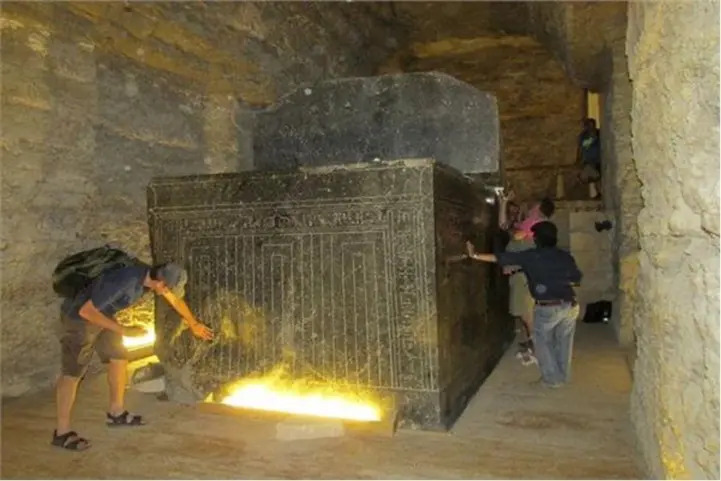
If we see these mysterious coffins, we notice that the accuracy of the sculpture is only from the inside and not from the outside, the coffins are zigzag from the outside, which indicates that the inside is the most important and not the outside, and if we know that each coffin consists of one huge piece of rock and that the thickness of the wall is large, we conclude that there is a possibility that these coffins were designed to withstand high pressure for some reason, what is the purpose of that?
Some people think that these coffins were used as batteries to generate energy, as they need to withstand great pressure, but this theory is invalidated by some scientists because some of the coffins from the inside were rough and uneven, which indicates that the manufacture of these coffins has suddenly stopped as a result of something that happened suddenly. Serapeum sarcophagi are one of the biggest mysteries of ancient Egypt and no one has yet been able to give logical explanations of what the serapeum is or even how those giant sarcophagi were introduced from this narrow passage.
Teleportation theory

Some researchers suggested that these coffins were used as means of movement between planets and stars, and that they were not made by humans, but made by jinn to move and communicate, and the strangeness of the conclusions proposed by some indicates their despair of reaching a logical explanation, which prompted them to some illogical conclusions that do not depend on any scientific or archaeological principle.
Theory of healing capsules
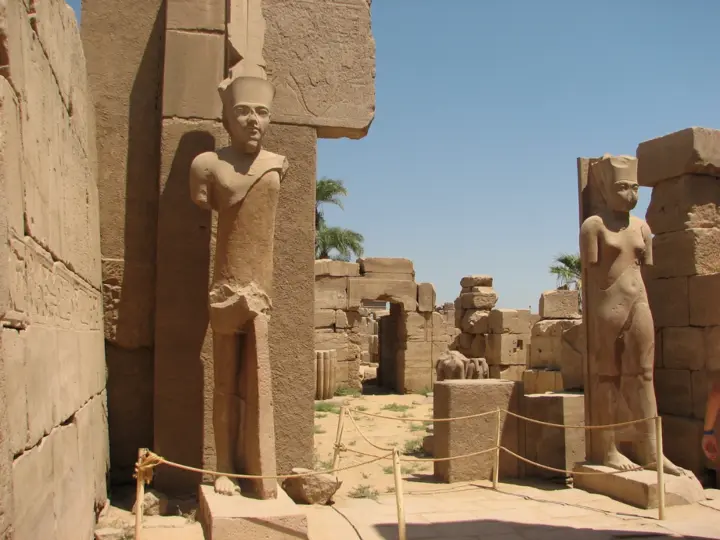
If we link the name of the place and the worship of the Egyptians to Abis, who is the embodiment of the god "Serapis", we will find that there is a link between healing and this place and the god who was worshiped in that land, so it is possible that these coffins were used in some way to heal some diseases by placing the patient in that coffin and closing it tightly for a while and then exposing him to something that causes the killing of bacteria or viruses causing the disease. This may explain why all the coffins are empty as they were not made for burial, but for temporary use.
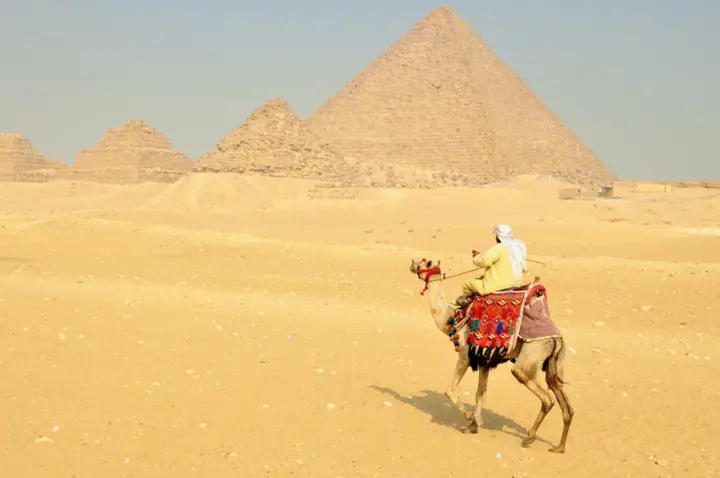
In conclusion, do you think the day will come when we can find a logical explanation for the existence of this underground mystery?








